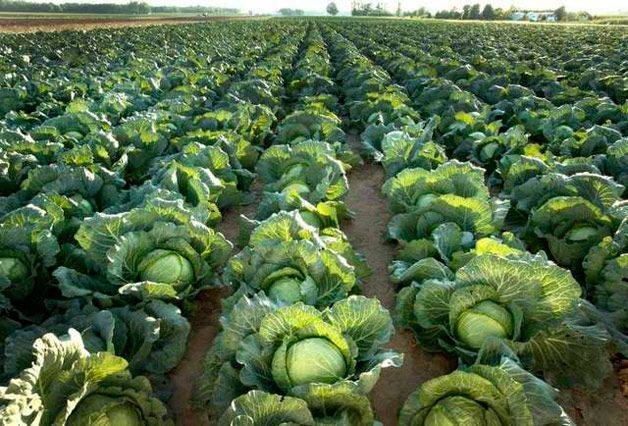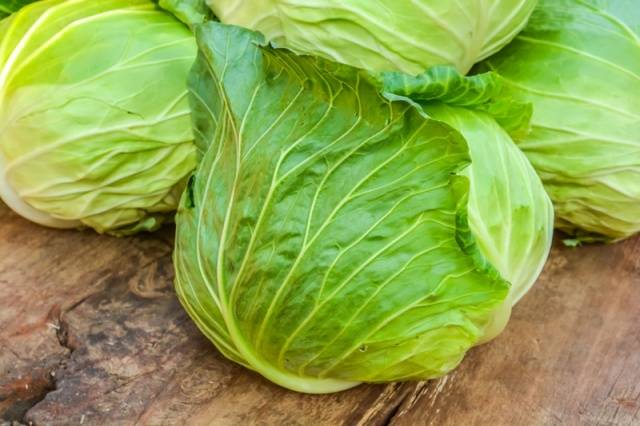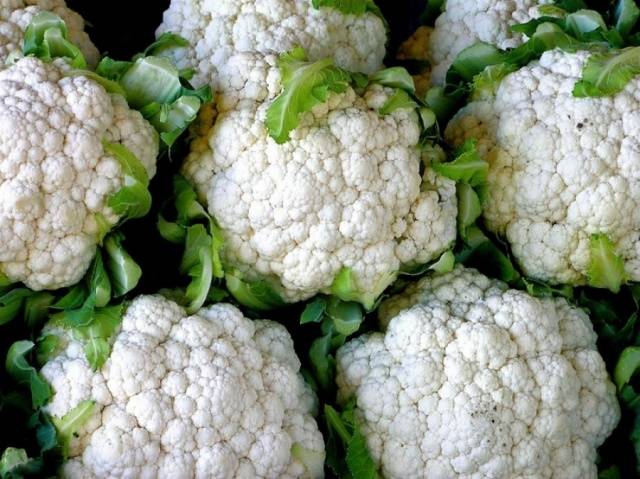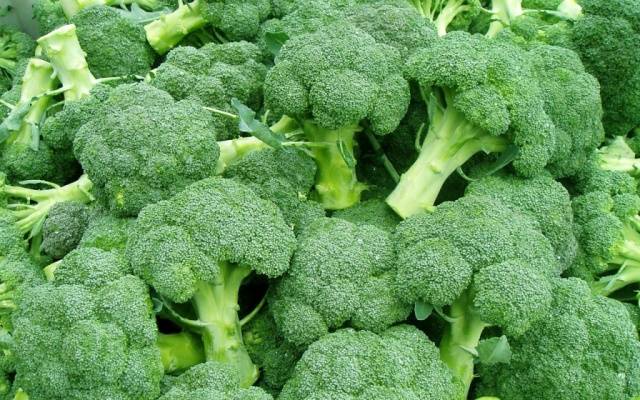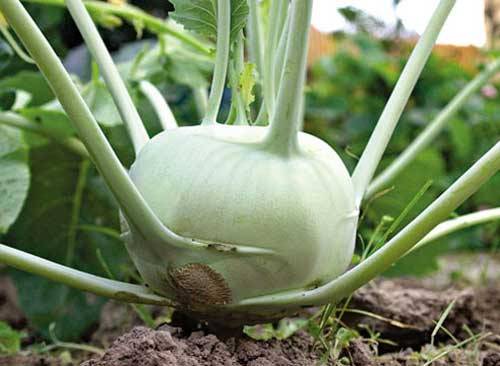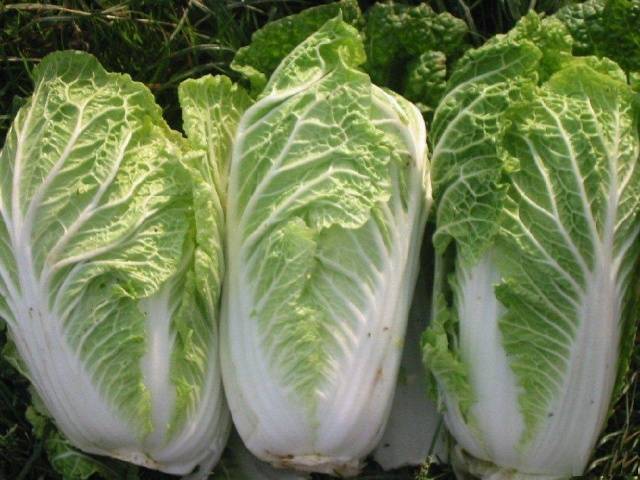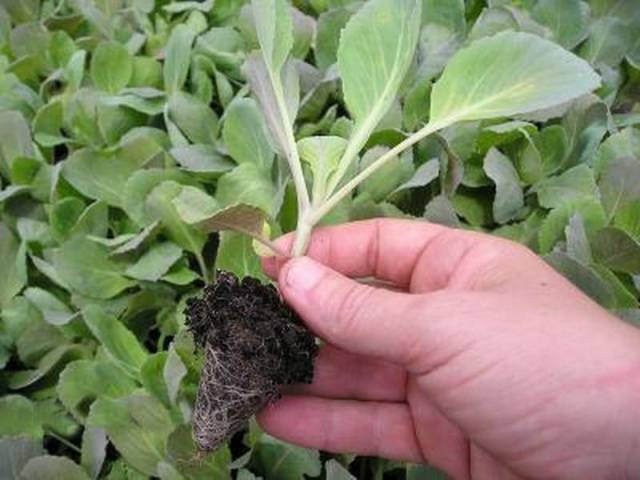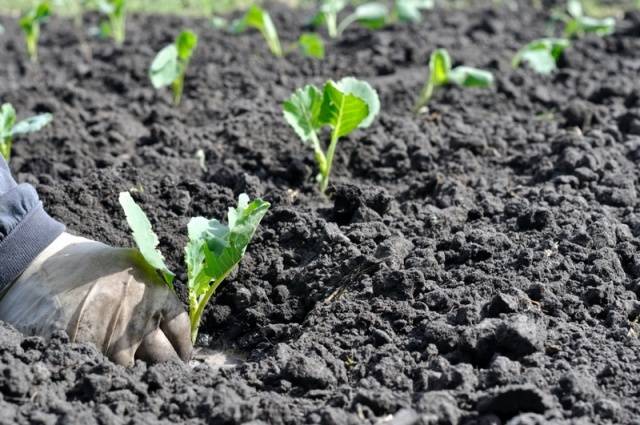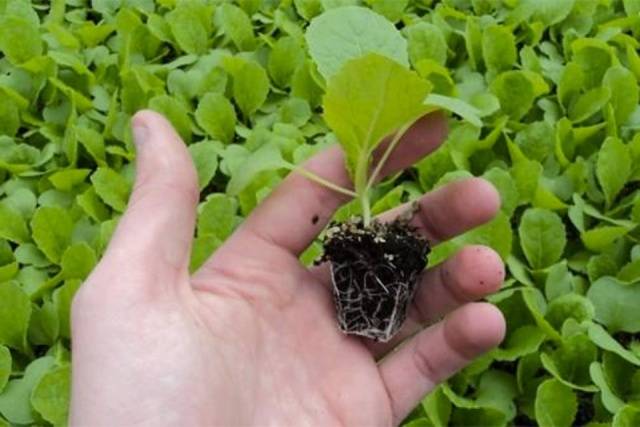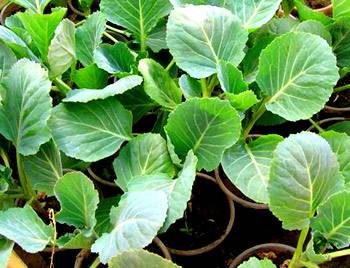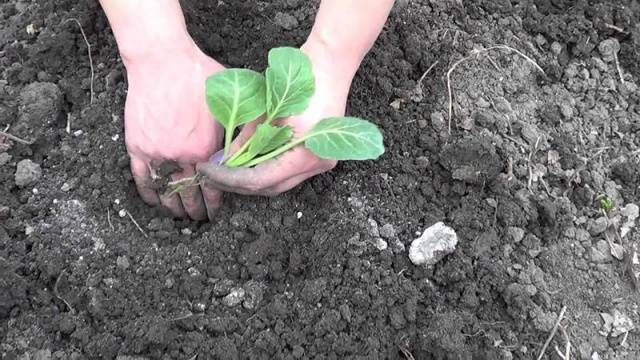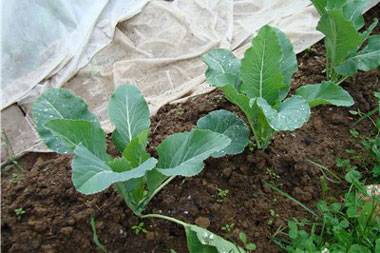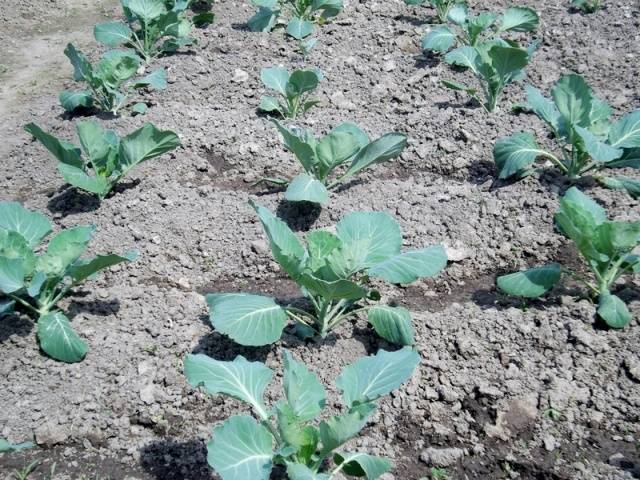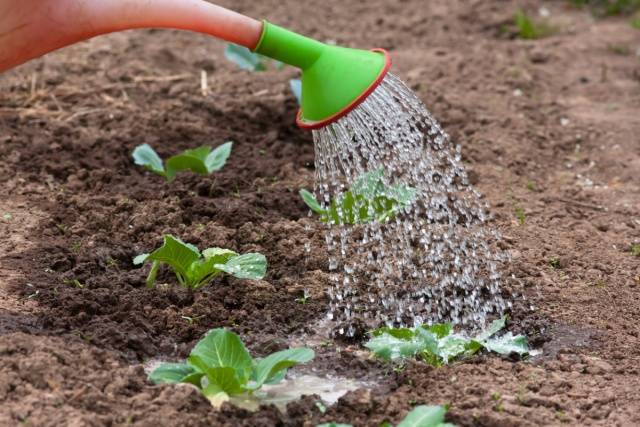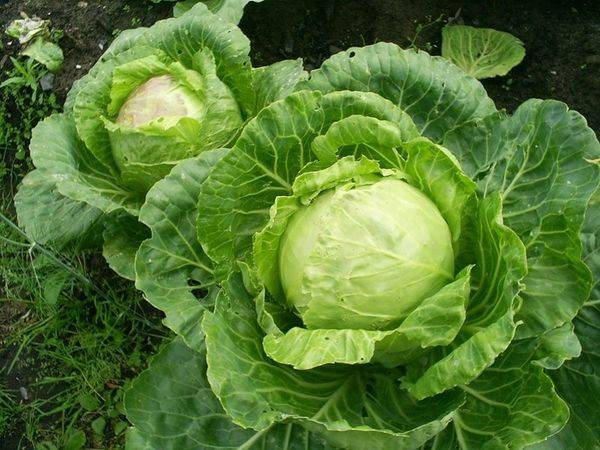Content
It is difficult to imagine the diet of the average Russian without cabbage. This vegetable has long been grown in Europe, and in Russia, at the beginning of the 19th century, more than 20 varieties of garden cabbage were known. It is believed that ordinary white cabbage is unpretentious, and it is quite easy to grow it. In fact, the gardener can face a lot of difficulties and, as a result, lose the entire crop or a significant part of it.
When to plant cabbage in the ground, what the planting time depends on, and how to grow a decent harvest of a useful vegetable - this is the article about this.
What determines the timing of planting cabbage
To find out how to properly plant cabbage in open ground, you first need to decide on the variety and variety of this vegetable.
Cabbage belongs to the cruciferous family; today there are more than a dozen varieties of vegetables that are commonly eaten. The most popular types of cabbage in Russia are:
- White cabbage - the most common variety in domestic gardens. The fruit of this species is a dense head of cabbage, which is used for preparing fresh salads, pickling and adding to various dishes.
- Red cabbage contains even more nutrients than a regular garden variety. Outwardly, it is similar to the previous species, only the heads are painted in a dark red-purple hue. Delicious salads are prepared from such a vegetable.
- IN cauliflower peduncles collected in elastic brushes are edible. A bush of such a vegetable looks like a white head surrounded by greenery, consisting of many underdeveloped flowers. The species is very healthy and tasty, the fruits of such a cabbage can be stewed or fried.
- Broccoli similar to cauliflower, but its inflorescences are colored green or purple. It is rich in minerals and antioxidants.
- Brussels the variety is a thick, long stem, on which there are many miniature heads that outwardly resemble ordinary white cabbage. Such "babies" contain more vitamin C, for example, than oranges and lemons. Therefore, the vegetable is very healthy and nutritious.
- Savoy cabbage very much like a white cabbage, only its leaves are corrugated, and the head is less dense. Fresh salads rich in vitamins and microelements are cut from such a vegetable.
- IN kohlrabi contains a lot of vitamins, calcium and glucose. The stems of this variety are in the shape of a ball, from which long leaves grow on tall petioles.
- Chinese cabbage today it is especially popular; in recent years, summer residents have begun to sow it on their plots. The fiber of the heads of cabbage is very delicate, and the leaves are corrugated, from this type delicious salads are obtained. But this kind of vegetable is not stored for long.
- Chinese cabbage looks like lettuce leaves, because the plant does not have a head or ovaries. But its taste and nutritional qualities correspond to garden cabbage.
Having decided on the variety of cabbage, you can start growing it. Regardless of the type, it is recommended to plant cabbage in open ground no earlier than two true leaves appear on its seedlings. But the seedlings should not outgrow either - such seedlings are poorly acclimatized and do not give good yields.
So, cauliflower and broccoli are considered the most thermophilic, therefore they are planted in the ground later than the rest. And the Savoyard variety, on the contrary, is capable of withstanding cold and even frost - cabbage seedlings can be transferred to open ground already in the middle of spring.
Most often, Russians grow white cabbage, and this type should be given more attention. So, depending on the timing of ripening, they are distinguished:
- Early ripe white cabbage. Its distinctive feature is smaller heads with delicate and not very elastic leaves, its color is often not white, but greenish. Such a vegetable is used to prepare fresh salads and seasonal dishes, but early cabbage is unsuitable for long-term storage, therefore it is not canned, not pickled or salted.
- Mid-season varieties already have some keeping quality. They make quite tasty and nutritious salads, you can salt or canned such cabbage, it is quite possible that the heads of cabbage will last until next spring.
- If you need a variety for long-term winter storage, choose late ripening cabbage. Its heads of cabbage are tight, large and resilient, often painted white.
A simple question will help to determine the variety: "For what purposes does the summer resident or gardener need cabbage?" But at the same stage it is necessary to take into account the climate of the region in which the vegetable garden is located - in Siberia or the Urals, for example, it is better not to plant late-ripening varieties, they may not ripen in a short summer. But in the southern regions of Russia, many gardeners collect two crops of an early-ripening vegetable per season, while still managing to grow late varieties for winter storage.
How to determine the timing of planting cabbage seedlings in the ground
First of all, the timing of planting depends on the early maturity of the variety (as mentioned above). The second important factor is the climatic zone in which the gardener's plot is located.
In most of the country, early maturing white cabbage is planted in the soil around mid-May. Mid-season and late varieties are planted here at the end of the month.
Residents of the North and the Urals will have to shift the indicated dates by 1-2 weeks, but in the southern part of Russia, seedlings can be taken out into the garden 10-12 days earlier than standard terms.
Many summer residents today are guided by the lunar calendar, however? this is not very convenient, because there may be only two or three days favorable from this point of view for the whole month. It is difficult to compare your own schedule and the state of the seedlings with the recommendations of astrologers.
The generally accepted rules of the lunar calendar are as follows:
- plant seedlings, sow seeds should be when the moon is in the growing phase;
- on the new moon and full moon, all landings are prohibited;
- cabbage does not like being "disturbed" on Thursdays;
- do not plant anything on Wednesday or Friday.
Well, and the main rule - you need to plant any plants only with positive thoughts and a good mood.
For planting cabbage seedlings in the ground, it is better to choose a cloudy day, even better if there is a drizzle of light rain. When it's hot outside and there are no clouds in the sky, seedlings are planted in the evening, closer to sunset.
Finding out when to plant cabbage seedlings is most favorable, it is important not to lose sight of the condition of the seedlings themselves. Ideally, cabbage seedlings during this period should:
- be strong and healthy;
- have a formed root system;
- pass hardening;
- have at least 4-5 true leaves (early ripening varieties - 7-8 leaves each);
- reach a height of 15-20 cm.
For such results, at least 45 days must pass from the day of sowing cabbage seeds for seedlings. With proper care, timely feeding, supplementary lighting and sufficient watering, the seedlings will be ready for transplantation on the 45-55th day after sowing.
How to plant cabbage for seedlings
Planting seedlings always starts with preparing the seeds and soil. Cabbage seeds are large enough - they are balls, about 2-3 mm in diameter, dark brown in color. Experienced gardeners recommend not immediately sowing cabbage seeds in cups with soil, but first preparing them for germination.
Cabbage seed preparation is as follows:
- they are placed in hot water, the temperature of which does not exceed 50 degrees. This is necessary to disinfect the seed, which often contains viruses and bacteria that are dangerous for cabbage seedlings;
- to stimulate the seeds and enhance the growth of seedlings, the material is soaked for a couple of hours in special stimulating solutions for seedlings (like "Epin");
- after the seeds have been soaked in warm water or a solution, they need to be dipped in very cold water for five minutes - this will harden the seedlings in the future.
The soil for cabbage seedlings should be loose and nutritious - these are the main conditions. Its acidity should be neutral, if the soil is acidic, lime or chalk is added to it.
It is better to prepare the substrate for seedlings in the fall, because in early spring it is not always possible to collect the necessary components in the garden - the ground can be wet, sometimes there is still snow on the site at this time (after all, seedlings are planted in March).
Seedlings of cabbage in the open field will feel better if the seeds are first sown in a substrate containing soil from the same section of the garden. A substrate is prepared from part of the humus and part of the sod land, and a little wood ash is added to loosen and disinfect it.
Such plots must rest from cabbage crops for at least three years.
The soil poured into the container must be poured abundantly with warm water - after that, watering is stopped until the cotyledon leaves appear on the seedlings.
Seeds are placed in depressions of about 1 cm and sprinkled with loose earth. Containers with seedlings are covered with foil and placed in a warm place - the temperature should be kept at 20 degrees.
After 4-5 days, the first leaves should appear. The film must be removed, and the seedlings themselves must be placed in a cooler place with a temperature regime of 6-8 degrees. The cabbage will stay here until the first true leaf is formed.
When the leaf has appeared, the containers are raised on the windowsills or placed in another place, where the temperature during the day is kept at around 16-18 degrees, and at night it drops by several divisions of the thermometer.
At the same time, you can carry out the first feeding of cabbage seedlings. In order not to burn delicate plants, the ground between them is pre-watered. From above, the seedlings are spilled with a liquid solution of slurry, herbal infusion or other organic fertilizer.
Recharge is repeated when the 6-7th leaf is formed, and the seedlings themselves are ready to be transferred to a permanent place in the garden. For this, a composition of ammonium nitrate, potassium chloride and superphosphate is used.
Seedlings should be watered regularly, but it is important to ensure that the soil is not waterlogged - the vegetable often suffers from fungal infections (black leg, for example). The soil between the plants should be carefully loosened, because the roots of the seedlings need oxygen.
When there are 1-2 true leaves on the seedlings, it must be dived into individual containers. But this stage can be avoided by immediately sowing seeds in pots or peat glasses. Before diving, the seedlings are watered abundantly, the plants are transferred along with an earthen clod, and the root is pinched a third of the length.
You can start hardening seedlings immediately after the formation of real leaves - this culture is in dire need of fresh air.
However, drafts and strong hypothermia of the cabbage should be avoided - this will stop its growth.
To prevent the seedlings from stretching, to be squat and strong, they need a lot of sunlight. In March, the sun, unfortunately, may not be enough, so the pots with seedlings are supplemented with phyto- or fluorescent lamps - you need to illuminate the plants for 12-15 hours a day.
How to transfer cabbage seedlings to open ground
When to plant cabbage in the garden, we have already figured out. How can you do it right to get a good harvest?
It is worth planting seedlings in the ground no earlier than it warms up well. The soil temperature should be at least 10-15 degrees. It is easy to check the readiness of the land - just sit on it. If a person is comfortable sitting in a garden bed without bedding, then cabbage seedlings will also like it there.
The beds for cabbage seedlings are prepared in advance by digging the ground onto a shovel bayonet and removing weeds... Cow dung is introduced before winter. In the spring, seedling holes are prepared. Their depth should slightly exceed the length of the roots of the seedlings - it is approximately 15 cm.The distance between the holes should be sufficient - the planting scheme for most cabbage varieties is 50x50 cm.
This is due to the culture's love for the sun and the need to ventilate the seedlings and the land under it.
Cabbage is good for "neighbors" with a superficial root system, such plants additionally loosen and nourish the soil, protect the leaves of the crop from the scorching rays of the sun.
Plant cabbage seedlings as follows:
- Make seedling holes.
- Pour nutrients into the bottom of each well. It can be manure, nitrophoska, and other mineral fertilizers. Add wood ash near the matchbox, a little peat and sand if the soil on the site is too dense. All this is mixed and covered with a thin layer of earth so as not to burn the roots of the seedlings.
- Seedlings are removed from a pot or box, their roots are examined and dipped in a growth stimulator.
- Deepen the seedlings into the hole by cotyledonous leaves.
- Sprinkle cabbage seedlings with a little moist soil and tamp them slightly.
Only the planted seedlings do not tolerate extreme heat very badly, so the bushes need to be shaded for about a week with newspapers or agrofibre. It is necessary to cover the seedlings when there is a chance of frost.
How to properly care for cabbage
The fact that the cabbage has acclimatized will signal the appearance of the rudiments of new leaves. The plants are now strong enough to withstand the sun and the cold at night.
Cabbage is very fond of water - you need to water it often and abundantly, otherwise the heads of cabbage will be small and not crispy. About 10 liters of water should be poured under each bush every 2-3 days. A little less often, seedlings are watered only in cloudy or rainy weather.
Pests love cabbage, and it is also often subject to fungal infections. Therefore, plants need to be inspected regularly to identify hazards at an early stage. Experienced gardeners recommend mulching cabbage beds to prevent overgrowth of weeds. After all, they do not allow cabbage to air normally, attract pests, and cause fungal diseases.
Peat or cut grass can be used as mulch. To protect cabbage from whitefly butterflies and aphids, strong-smelling plants such as marigolds, lemon balm, basil or thyme are planted next to the seedlings. Slugs can be lured out by placing a plate of beer between the seedling beds - during the night all the pests will crawl out to feast on alcohol, and they can simply be destroyed.
Fungal infections in cabbage seedlings are the hardest to fight - they are easier to prevent. For this, the plants must be well ventilated, high-quality illuminated by the sun. It is very important to follow the seedling irrigation schedule, to loosen the soil in the aisles.
Compliance with all rules and requirements guarantees stable vegetable yields. It remains to wait for the formation of heads of cabbage and cut off the heads of cabbage for storage.
